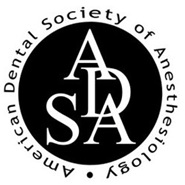 A dental bridge is one of the most common and popular tooth replacement options. It offers dental health benefits as well as aesthetic ones. This type of restoration comes in a few different forms, making it a viable tooth replacement option for most patients. If you are looking at tooth replacement options, consider a dental bridge.
A dental bridge is one of the most common and popular tooth replacement options. It offers dental health benefits as well as aesthetic ones. This type of restoration comes in a few different forms, making it a viable tooth replacement option for most patients. If you are looking at tooth replacement options, consider a dental bridge.
Overview of dental bridges
A dental bridge is a non-removable tooth replacement option that comes in a few different forms and can replace one to four teeth in a row. For example, a traditional bridge consists of about 1-4 false teeth (also known as pontics) flanked on each side by dental crowns. A dentist cements the crowns over the healthy teeth on either side of the space, and the pontics fill the empty space like a bridge between the two healthy teeth.
Types of dental bridges
There are a few variations on the traditional dental bridge, but they all work similarly to bridge the gap left by missing teeth. Though the traditional bridge is the most common, patients may also choose one of the following.
Resin-bonded bridge (Maryland)
This type of bridge is a common option to replace front teeth. The pontic is attached to a metal or porcelain framework with wings that bond to the back of the teeth on either side of the gap.
Cantilever bridge
These bridges are not as common but can help when only one adjacent tooth supports the bridge. It comprises one pontic and one crown, cemented over one tooth next to the space.
Implant-supported bridges
These are similar in construction to traditional bridges. However, instead of natural teeth, the crowns are cemented over dental implants.
Benefits of dental bridges
With all these options, a general dentist can easily customize the bridge to fit the patient's needs and budget. In addition to being customizable, a dental bridge offers the following benefits:
- Replaces 1 to 4 teeth
- Restores chewing function
- Natural-looking tooth replacement
- Restores the aesthetics of the smile
- Keeps other teeth from shifting out of place
- Does not have to be removed for cleaning
In the case of an implant-supported bridge, the patient benefits from continued jaw bone stimulation due to the dental implants.
Getting the most out of your dental bridge
Another important benefit to dental bridges is their longevity. Bridges can last 10 to 15 years with the right kind of care. Patients should continue to brush twice, floss once daily, and have regular checkups with their dentist.
Tools such as interdental brushes, floss threaders, and water flossers are excellent tools for helping to clean under and around a dental bridge. Although bridges are durable, it is still a good idea to avoid wear and tear by avoiding eating hard foods. Also, if you suspect you are grinding your teeth, see your dentist about a nightguard.
Restore your smile with a dental bridge
Dental bridges are a natural-looking and versatile way to replace missing teeth. Our team offers dental bridges in Miami and the surrounding area. Please call us today to learn more.
Request an appointment or call Feel Good Dentistry at 305-230-4484 for an appointment in our Miami office.
Related Posts
Dental bridges and implants are two effective, natural-looking ways to replace missing teeth. Bridges are often best for replacing multiple teeth, while implants can replace one or several teeth. However, it is not always an either-or situation. Using bridges and implants together can restore a patient’s smile to its full function. For many, it comes…
A dental bridge is a restoration that relies on dental crowns and a short or larger row of artificial prosthetic teeth. It is completely customized to each patient so as to ensure a snug fit. Dental bridges have become one of the most popular ways to replace teeth that are missing as they help restore…
Replacing your tooth after it is lost prevents many problems in the future. Fortunately, modern dentistry allows easy access to tooth replacement options, including the dental bridge. Acquiring this appliance is simple enough, typically requiring only two appointments to complete your smile and get you back on track.After selecting the ideal type of dental bridge…




